

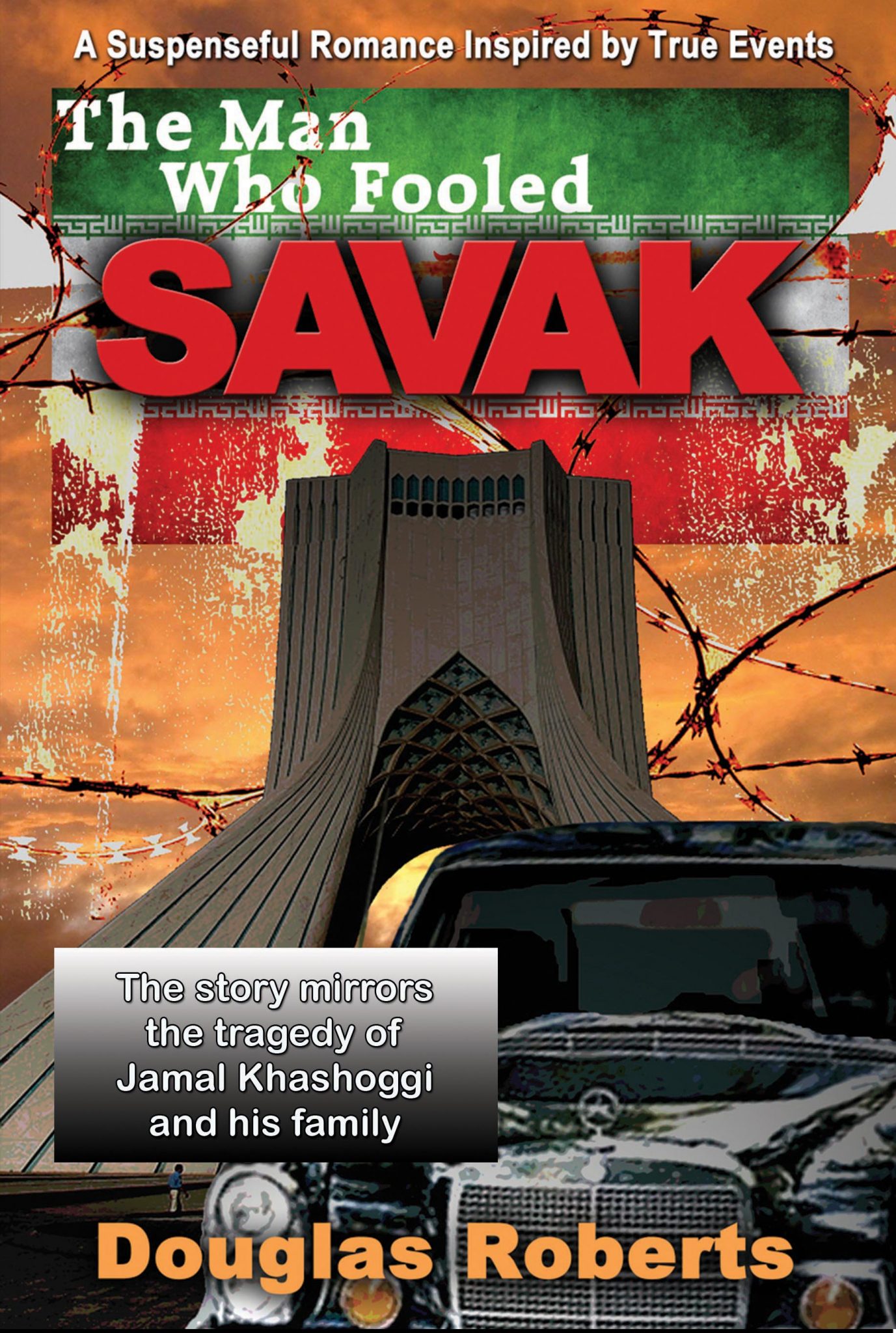
Note from the Publisher
Douglas Roberts was stationed in Tehran, Iran in 1971 working in a US classified message center and experiencing the brutal oppressive dictatorship of the Shaw of Iran first hand. The Man Who Fooled SAVAK inspired by true events in the early 1970s, captures what it is like to live in a dictatorship with secret police monitoring your every move. “The book is as relevant today with the current events in the Middle East as if it were written in the 1970s,” said Anthony S. Policastro, publisher of Outer Banks Publishing Group. “It is rare that a book comes along and reminds us of the some of the basic freedoms and human rights we take for granted living in a Democracy,” Mr. Policastro added. The story is about a G.I. stationed in Tehran during the Vietnam War, who falls in love with an Iranian girl and who later launches an elaborate plan to get her and her mother out of the country. They hope to reunite with their father and husband who escaped death from the Shah’s secret police, SAVAK, ten years earlier.
By Douglas Roberts
As an author I am aware of how time and events can change the filter through which we process our stories. This happened to me with my book The Man Who Fooled SAVAK. Until recently, I saw the main narrative of my story as centering around an Iranian family’s search for their father, living in exile. Fearing for his life, the husband could not return to Iran. And the family was not allowed to leave the country to join him.
With Donald Trump as President of the United States, I started to see a new disturbing context. The narrative was now about the trials and tribulations of a separated family, separated by the Iranian government. Every time I would read the current news about children in detention centers, separated from their parents, a feeling of discomfort would come over me that was all too familiar. Then it hit me. My book was not really about Iranian family members not being able to leave their homeland. That was just the hurdle they faced.
The anguish and trauma of any family being forced into separation by their government is not just a callous violation of human rights. The psychological and emotion strain it causes is immense. It was quite a revelation to suddenly have that realization about my own novel.
Living in Tehran, Iran in 1971 working in a classified message center created situations that caused me to lose my innocence about how a country, who was our ally at the time, dealt with abuse of freedoms that people in the U.S. took for granted.
In America, freedom of the press was something most Americans considered almost sacred, and to violate it was unthinkable. Imagine my shock when I learned that the Shah of Iran in 1971 decided he did not like what was written about him in the western media and had all offending periodicals quietly removed from newsstands. I knew about this because of my job in the classified message center. This was not public information.
In my mind the issues involved did not seem that controversial. The Shah was throwing lavish parties in celebration of the nation’s 2,500 anniversary. The criticisms were that the celebrations were too lavish.
But that shock did not compare to the one I got later that afternoon, when I got home from work and telephoned my girlfriend Fari. She blew up at me. I was never to talk about such things over the phone! Someone could be listening. As I would eventually discover, someone probably was.
Was this how such a close ally of the United States behaved? Apparently so!
Fast forward to today. Our President gleefully talks about body slamming journalists, and how the press is the enemy of the people. When I read that 44 percent of Republicans recently polled said Trump should have the autocrat’s power to shut down news shows and how successful his efforts have already been. Every time I hear the press being trashed, which is regularly now, my mind flashes back to the crisis mode it put U.S. military personnel in when the Shah had articles critical of him removed. It sends a chill up my spine.
Perhaps my biggest loss of innocence was the discovery that the Shah of Iran tortured his prisoners. It was a seemingly mundane message issued by the State Department to Iran complaining about the name given to a high-tech torture device developed in Israel called the Apollo, the same name as our space program at the time. The device was designed to administer electric shocks, including shocks to the head via a metal hood. I was disturbed that the complaint only focused on the name of the device and not the torture itself. I cringed at the thought that a supposedly trusted ally of the United States would resort to such inhumane treatment of people.

Azadi Square, Tehran, Iran
More disturbing than learning about the Apollo, is the acceptance of torture by recent administrations here in America. The war on terror uncovered scandals of secret CIA prisons where prisoners suffered the brutal tactics of interrogation and horrible mental health problems that haunt the men subjected to torture.
The whole conversation about torture changed for the better, recently. Former President Obama banned the use of waterboarding as an interrogation technique in 2009. That ban was later codified in law by Congress.
But today, Trump champions the benefits of the recently banned method of waterboarding, even though none of his staff believes in its effectiveness.
A larger concern of mine is that Trump believes that Iran is the enemy and has dismantled the diplomatic effects of the so-called Iran Deal. But it’s more than that. Trump remembers that in 1953, the CIA overthrew and replaced the newly elected Prime Minister of Iran, Mohammad Mosaddegh. Unduly influenced by Benjamin Netanyahu he believes he could repeat a regime change in Iran. But we live in a different world now. Any attempt at regime change in Iran, would be catastrophic and would result in the balkanization of Iran. Iran would turn into another Iraq or Syria.
As far as my book is concerned, my hope is that anyone who reads it will realize that while we have issues with the current regime, the Iranian people are not our enemy. The late Anthony Bourdain used to crow about the most friendly and hospitable people he’d ever met were from Iran. Having once lived there, that was no news to me. I hope the reader gets a sense of that.
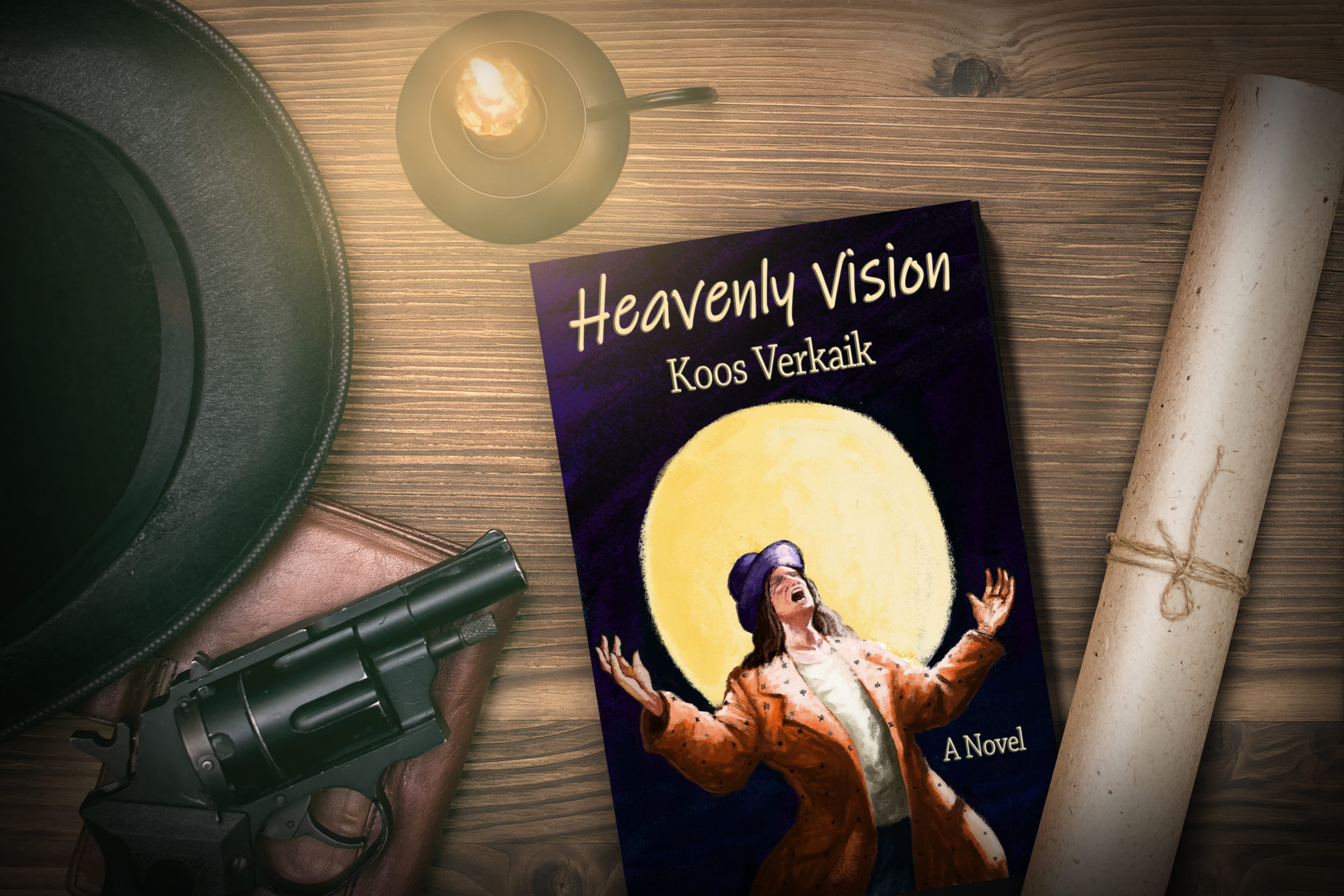
Nothing is what it seems, in this new, exciting Koos Verkaik novel – Heavenly Vision, undoubtedly one of his masterpieces!
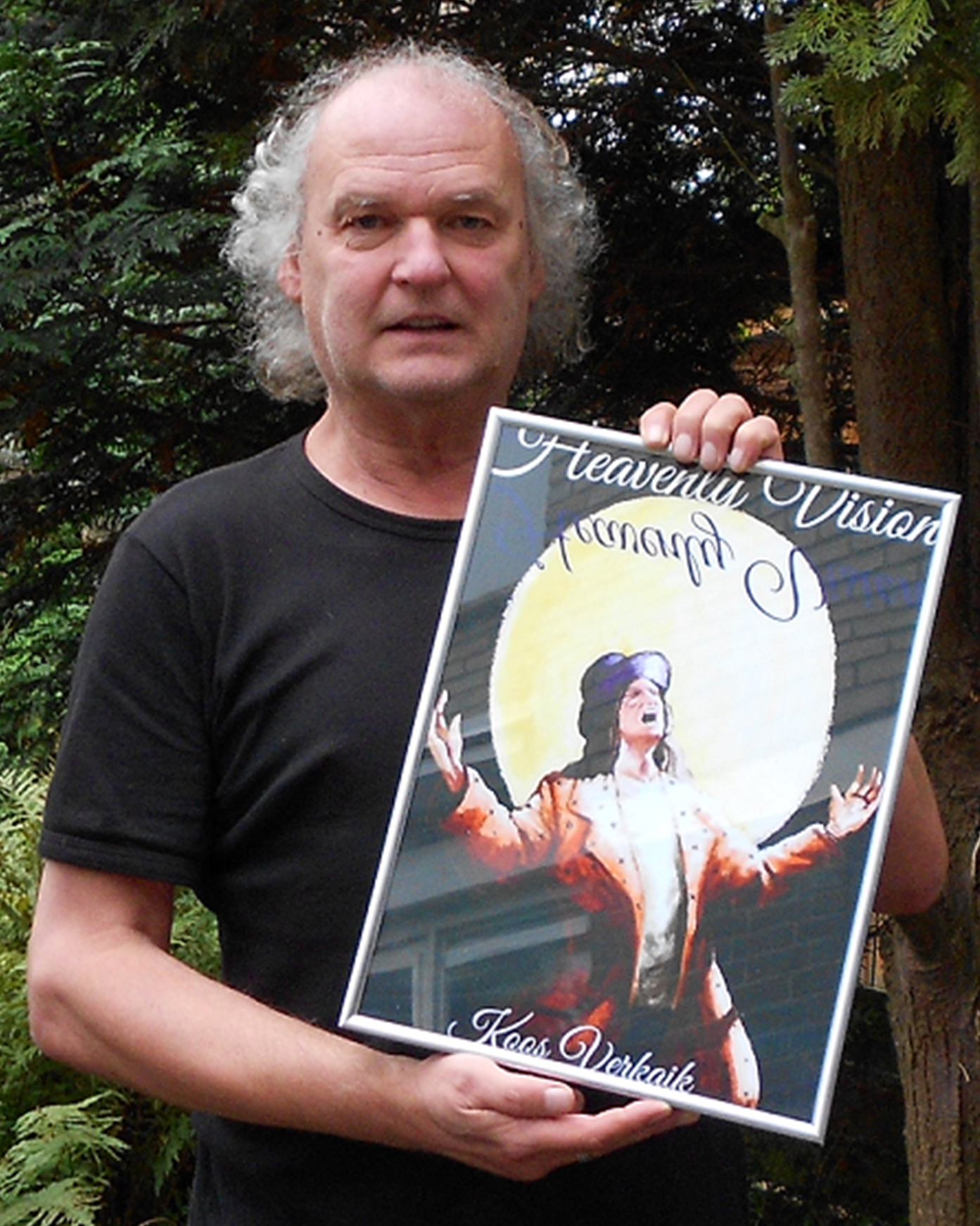
A book collector of limited means comes across a 1745 Atlas of the Cape of Good Hope in a second-hand bookshop in Amsterdam. Once his historian friend examines the manuscript found inside, he becomes very excited and life for Jan Glas is never the same again.
A book collector of limited means comes across a 1745 Atlas of the Cape of Good Hope in a second-hand bookshop in Amsterdam. Once his historian friend examines the manuscript found inside, he becomes very excited and life for Jan Glas is never the same again.
By Sheri A. Wilkinson 5.0 out of 5 stars Fantastic! September 19, 2018
In 1745 an old manuscript is found in an old atlas of Cape of Good hope. Captain Adriaen Kalf tries to figure out its meaning. In current time, a man from Amsterdam Jan Glas learns of a machine that could end the world. He embarks on a journey to England and the USA to learn more about this. He meets a man in the United States from The Center of The Heavenly Vision, who claims that this machine is real and will indeed will kill people. Jan encounters some strange people and events, could this manuscript from the past be connected to this killing machine? Does this machine exist? And is this “prophecy” going to come true? A cast of likable, unlikable and quirky characters, along with a very original and interesting story makes for a fantastic read. I liked the writing style, going back to the past and present, and the characters, all unique in their own way. I recommend Heavenly Vision to those who like adventure , drama and excitement. I also recommend The Nibelung Gold also by Koos Verkaik.
By Sandra K. Stiles 4.0 out of 5 stars Very Interesting September 19, 2018
If you like books that bounce back and forth between the past 1700s, and the present then this is the book for you. It makes it a little confusing, but if you are willing to hang in there it all becomes clear in the end. In the past we have an old manuscript, in the present we have a machine that is said to be able to end the world. What are the connections if any between these two? The author has taken these two events and woven them into a story that will have you reading cover to cover just to find that connections. Once again this author has created a book that grabs you and forces you to read to find the answer to all of those questions you had at the beginning. I applaud him for this ability. I received a copy to facilitate my review. The opinions expressed here are my own.

Reviewed by Steven Felicelli
According to Ron Rhody’s wife, he is not eligible for authoring a memoir. He hasn’t won an Oscar or an MVP or a Nobel prize. And yet Rhody has a story he wants, needs, to tell. His story. And so that’s how he will tell it to us: as one of Our Own Little Fictions.
Reminiscent of Sarah Polley’s documentary Stories We Tell, Rhody meanders through his memory and down the real roads he’s traveled all over the U.S., from his beloved Frankfort, Kentucky, to California and back (via Florida and Alabama) and then back out to California. Along this circuitous route through his youth, manhood, and ancestry, we encounter all sorts of colorful characters, historical events, family triumphs, and tragedies, which in large part amount to the man whose story we’re being told.
The place closest to Rhody’s heart is clearly Frankfort, Kentucky. It is there his father, a newspaperman, fought for civil rights and to put down roots for his forward-thinking family. Though a wanderlust would uproot the Rhodys and send them all over the U.S., Kentucky kept calling them back to the heart of the heart of their country. In Our Own Little Fictions, Frankfort is origin and refuge, and it serves as the Ithaca of the author’s Odyssey.These chronicles of Rhody contain all the joy and pain of an American life that spans the Cold War to the present.
We meet his parents, grandparents, wife and children, friends and mentors. From animated anecdotes of a hard-nosed football coach doling out life lessons to the memorial for a dear friend and author of “sixteen erudite books,” we witness a life pass in time-lapse frames of laconic, Hemingwayesque prose.
Hemingway and his suicide haunt the narrative beginning to end. On a road trip from California to Kentucky, Rhody and his son make a scheduled detour to Hemingway’s home in Idaho (where he’d put the shotgun in his mouth).
”It seemed wrong that Hemingway had killed himself. Nature should have gotten him. Or chance.”
Later in the narrative and earlier in time, news of Hemingway’s suicide reaches Rhody, and he reflects on the premature tragedy, as well as his own (missed?) calling. These two time periods intermingle, and Rhody leaves Idaho with “an answer to a question I hadn’t known I’d asked.” Authorship was an alternative path he’d bypassed only to embark upon late in life.
Later in the narrative and earlier in time, news of Hemingway’s suicide reaches Rhody, and he reflects on the premature tragedy, as well as his own (missed?) calling. These two time periods intermingle, and Rhody leaves Idaho with “an answer to a question I hadn’t known I’d asked.” Authorship was an alternative path he’d bypassed only to embark upon late in life.
Late in life, indeed. The long road approaches its end and the loss of loved ones is an inevitability. Each story has the same conclusion, alas, and many of the characters we encounter in this Appalachian saga pass on in heartrending deathbed scenes and austere funerals. The depiction of these tragedies is sentimental, even cliched, but anything less/more would not be true to life. It is the commonality of these cliches that arise in endless variations, like updates of Shakespeare.
No, Ron Rhody is no Prince Hamlet, nor was he meant to be, but his story of “becoming,” with its conduplicatio, terse punch-lines, and homespun wisdom, is one that will always be in need of telling and retelling.
The feature photo above from left, Ron Rhody’s sister, Ann, his mother and sister, Mary Lou.
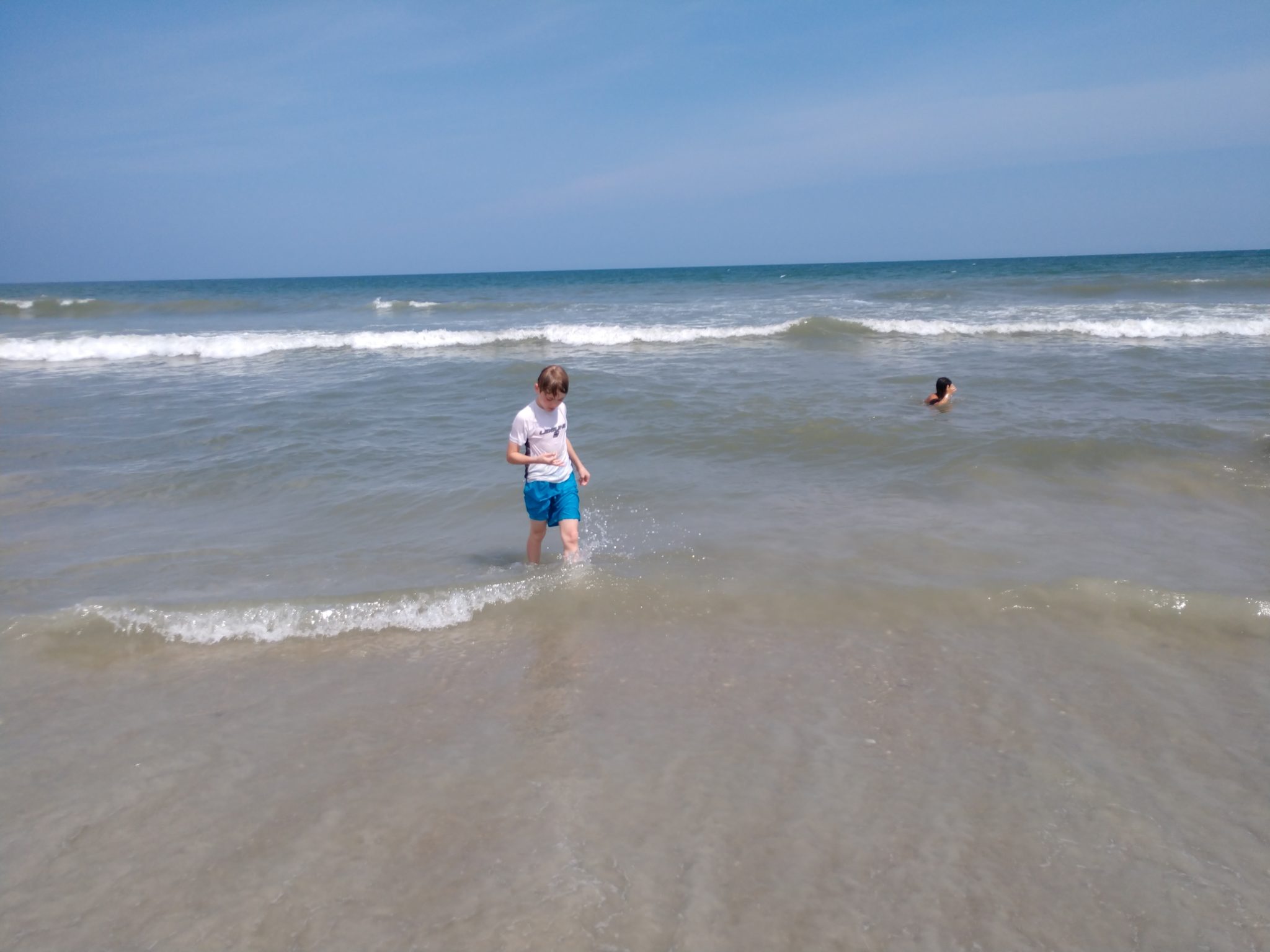
Be aware of rip currents this Labor Day Weekend. If in doubt, ask a lifeguard.

Koos Verkaik’s newest novel Heavenly Vision is about a book collector who finds a manuscript in a 1745 Atlas of the Cape of Good Horn that changes his life forever. Read the interview by Deborah Kalb on how Koos was inspired to write the murder mystery, Heavenly Vision.
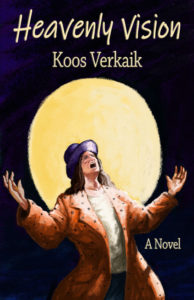
Q: How did you come up with the idea for Heavenly Vision?
A: For most of my books all I need is one simple fact. One line, one thought, will do to get me start writing. Where Heavenly Vision is concerned, I was intrigued by the fact that you can buy yourself an old book at a flea market and find a priceless drawing or etching between the yellowed pages! That stimulates my fantasy and I get cracking right away – not knowing at all where and when it will end.
I always start to write the first two or three pages with a simple pen on sheets of paper. Only after I know it is all right, I start working on a computer.
Sitting down in silence and write the lines with a pen is something I will always enjoy.
Q: The book takes place in a variety of locations and times. Did you write the novel in the order in which it appears, or did you move chapters around as you wrote?
A: I wrote it in the order in which it appears! When I start writing, there is a complete chaos in my head, but the manuscript must be one hundred percent all right. I make notes on sheets of papers, on beermats, on three different laptops, sometimes on the back of my hand – but finally it all comes together in the manuscript.
After having typed “The End,” the chaos has disappeared. The work is done. Then I take a deep breath… and start working on the next project.
Q: Did you know how the book would end before you started writing it?
A: I never know how my books will end. I know there are authors who make a storyboard, who only start writing after they have figured it all out.
For me every new book is an adventure – for myself and for my readers. The story grows and to be honest; I do know where to go with my stories, it is all somewhere in my head and it has to come out. I never had writer’s block; I have written since I was 7 years old and as a boy I worked at night and saw the sun come up.
Q: How did you research the novel, and did you learn anything surprising?
A: Research is always important. And… the internet is there for the common facts, books are there for the real information. In my work room I am surrounded by a couple of thousand books; I absorb the facts and write fantasy.
Right now I am reading Sapiens and Homo Deus from Yuval Noah Harari. Such a great writer about the history and the future of mankind.
For Heavenly Vision I didn’t have to do much research. Most of the things I wrote about (such as the Dutch East India Company) were already known to me. I am a collector of nonfiction books about science, but also about alchemy, the supernatural, mysterious historical facts, etc. Life is full of odd surprises and I love to write about it.
Q: What are you working on now?
A: I always write different books at the same time. There are two series of children’s books, Saladin the Wonder Horse and Alex and the Wolpertinger. Finished the last book of Saladin and work on book 14 of The Wolpertinger; intending to write over 30 different titles.
A new publishing company contracted me for all my novels: Righter’s Mill Press, Princeton. They also have a film company, Three Corners Entertainment. Signed contracts for all titles.
Right now I also started a new novel. And I never tell about a new story until it is finished… When I explain all about it, I feel less urge to complete it.
Q: Anything else we should know?
A: Yes. Heavenly Vision was published earlier by a Canadian company. Unfortunately the publisher passed away. We had become such good friends, She was such a great person.
Now Outer Banks Publishing Group has taken over; they will also publish my novel The Nibelung Gold soon and they already published the two series of children’s books I mentioned above.
I received wonderful reviews for the first edition of Heavenly Vision, which made me very proud (believe me, it is a great adventure and also a great honor to be published in Canada and the USA when you are a writer from faraway Holland).
About Koos Verkaik
Koos Verkaik, who lives outside of Rotterdam, Holland, is the author of more than 60 books from children’s series to mysteries to sci-fi. When his novels, All-Father and Wolf Tears were published, he earned the moniker as the Dutch Stephen King.
About the cover of Heavenly Vision
The cover was commissioned and created by Doriano Strologo, an illustrator in Numana, Italy, depicting the main character in the book, the mysterious Raso, the man who had the heavenly vision.
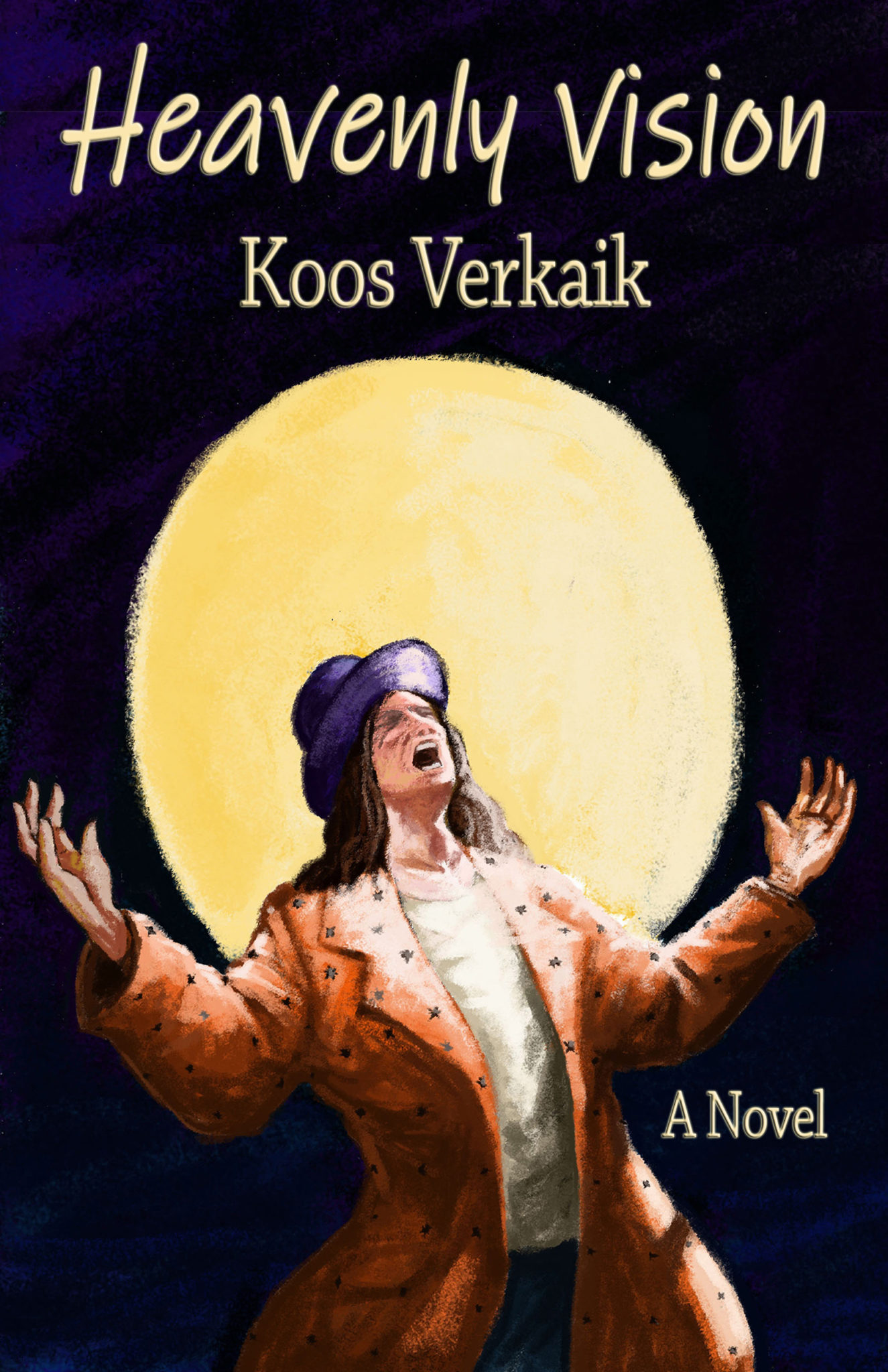
Nothing is what it seems, in this new, exciting Koos Verkaik novel – Heavenly Vision, undoubtedly one of his masterpieces!
A book collector of limited means comes across a 1745 Atlas of the Cape of Good Hope in a second-hand bookshop in Amsterdam. Once his historian friend examines the manuscript found inside, he becomes very excited and life for Jan Glas is never the same again.
“Allart Vroom climbed down from the ship, and we stood ready to catch him,” wrote Captain Adriaen Kalf. “His clothes, his flesh, his bones pulverized in our hands. He formed a small heap of powder at our feet. Please, believe me—it is not, like someone suggested, the contents of broken hourglasses.”
Glas, an Amsterdam publicist, later reads about a machine that could cause the end of the world! Of course, he wants to find the truth about the machine and the remarkable manuscript!
His curiosity takes him takes him to England and the USA. In Florida, a peculiar man crosses his path – Wesley Dunn, a Raso Preacher at the Center of the Heavenly Vision in Franks Knight, Florida.
This man says that the world will be destroyed by “The Machine of Colton”, which is also mentioned in the manuscript that Jan found in the atlas! Only a few people will survive – the true followers of the odd Mr. Wesley Dunn, and those who follow the Raso way of life!
Murder, mystery and intrigue will keep the reader guessing as to what is going on. Is the world coming to an end, and if so, who will survive?
To learn more about Heavenly Vision and Koos Verkaik read his latest interview with Deborah Kalb, Book Q&As with Deborah Kalb.
A cast of likable, unlikable and quirky characters, along with a very original and interesting story makes for a fantastic read. I liked the writing style, going back to the past and present, and the characters, all unique in their own way.
I recommend Heavenly Vision to those who like adventure , drama and excitement. I also recommend The Nibelung Gold also by Koos Verkaik.
By the end the author had impressed me so much that I was not sure whether to applaud the brilliance of the character in the story or the creator of that character that is the author. The twist or final pull was that good of a brilliance charm.
As usual Koos Verkaik brings a mélange of quirky characters to life. The good, the bad, but never the indifferent. He then weaves them into a mystical tale that moves between the present and the past of a strange machine that kills at will and a prophecy of doom. His unique writing style holds the reader’s interest from beginning to an end of the world scenario, as he builds the tension during a well plotted fantastical journey full of intrigue and mysteries.
This is another MUST for readers of strange and unique tales from the undisputed master with one of his whacky covers that I love…
If you like books that bounce back and forth between the past 1700s, and the present then this is the book for you. It makes it a little confusing, but if you are willing to hang in there it all becomes clear in the end. In the past we have an old manuscript, in the present we have a machine that is said to be able to end the world. What are the connections if any between these two? The author has taken these two events and woven them into a story that will have you reading cover to cover just to find that connections. Once again this author has created a book that grabs you and forces you to read to find the answer to all of those questions you had at the beginning. I applaud him for this ability.
Koos Verkaik was born in Holland, near Rotterdam. He worked as a copywriter for a short time. His first comics (three pages each week) were published in the magazine Sjors when he was only 16 years old. He wrote his first novel (sci-fi) in a weekend at the age of 18 and it was published immediately. During his long career as a novelist and author, he wrote hundreds of comic scripts and published over 60 books, both children’s books and urban fantasy novels. Koos writes (novels) every day and has translated books from English and German into Dutch.
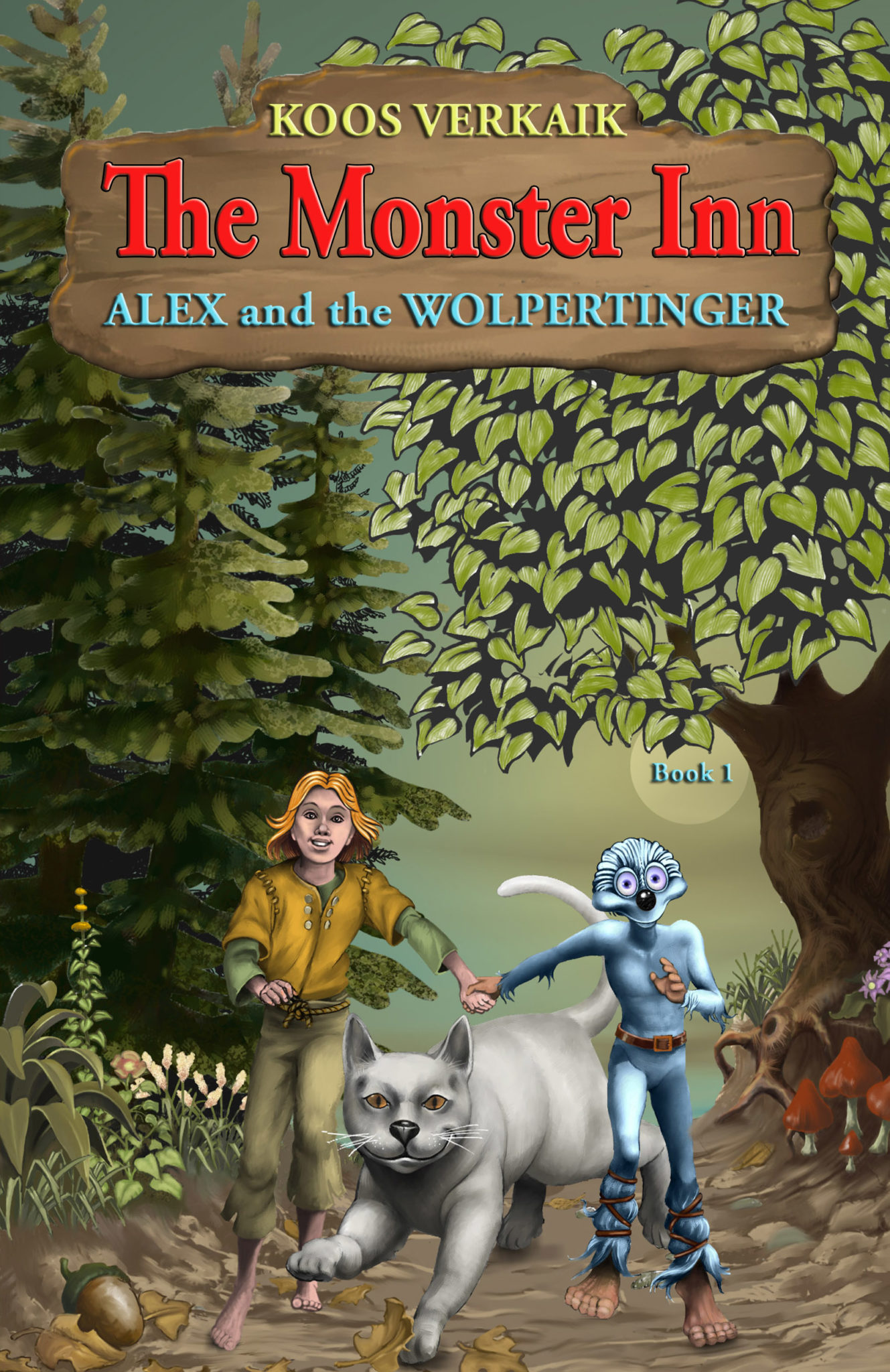
Let your child travel on an adventurous journey this summer with Alex and Ludo the Wolpertinger on a enthralling trip to find The Monster Inn, a wondrous place where the most fascinating characters show up!
By Koos Verkaik
Wolpertingers… little monsters or friends?
Teasers or small helpful creatures?
Actually, everyone is a bit afraid of them.
Humans and giants run away the moment they spot a wolpertinger.
And yet, a boy made friends with a wolpertinger from the mysterious Downhills!
It was Alex, a boy from the Alps, who lived in the land of King Clover a long time ago.
Alex and Ludo the Wolpertinger go from one adventure to another!
Together they travel to the Downhills to help free a magician who is a prisoner of the giant Prince Ruff Rumble.
They meet many strange creatures like a river monster, fire-breathing dragons, lizards and giant mice on their trip to the Monster Inn. There they hope to find someone who can make gold to free the imprisoned magician, Halo from Prince Ruff Rumble’s dungeon.
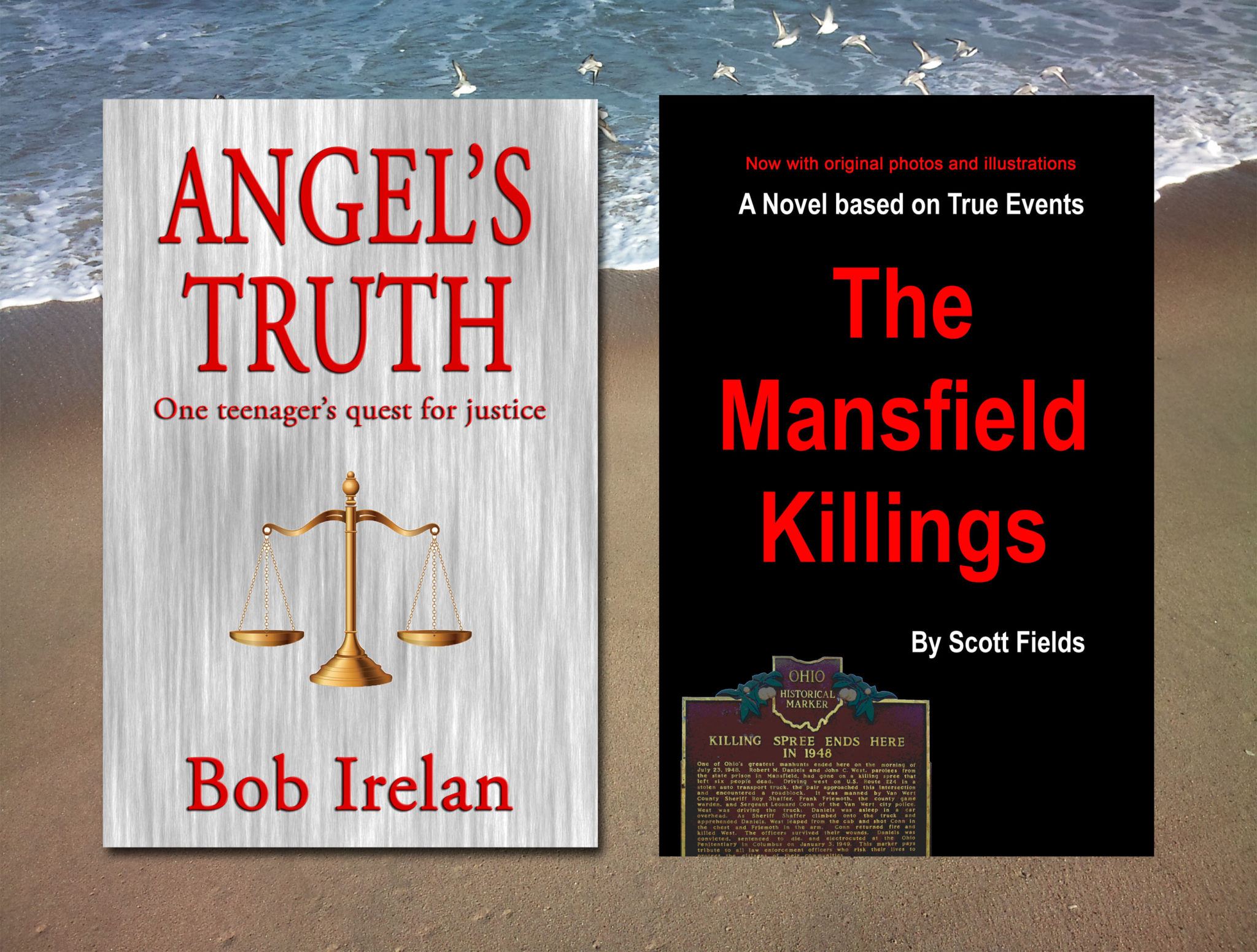
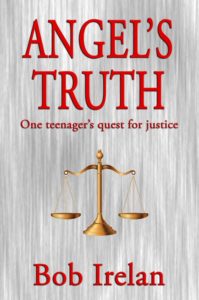
List Price: $15.99
5.5″ x 8.5″ (13.97 x 21.59 cm)
Black & White on White paper
268 pages
Outer Banks Publishing Group
ISBN-13: 978-0990679080
ISBN-10: 099067908X
BISAC: Fiction / Crime
Angel Gonzales is charged with heinous crimes that law enforcement, the media, and most folks in Richmond, Texas, and surrounding communities are certain he committed.
The crimes and trial dwarf anything that has happened in that part of the Lone Star state in anyone’s memory.
When, against all odds, the jury renders “not guilty” verdicts, shock escalates to anger.
In the minds of many, justice has failed, and a brutal criminal is being set free. For Angel and his court-appointed public defender, Marty Booker, being judged “not guilty” isn’t enough.
Together and with help from an unanticipated source, they attempt to prove Angel’s innocence.
In the process, they butt up against prejudice, deceit, and a sheriff and district attorney who put politics, ambition, expedience, and arrogance above responsibility to do their jobs.
It’s a story of horror, hatred, belief, and persistence – a story of a Mexican-American teenager who nearly loses his life on the way to becoming a man.
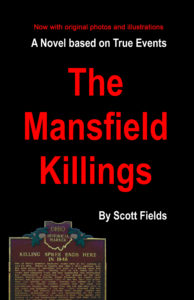 BASED ON TRUE EVENTS
BASED ON TRUE EVENTS
SOON TO BE A MAJOR MOTION PICTURE in 2019
Price: $14.99
5.5″ x 8.5″ (13.97 x 21.59 cm)
Black & White on Cream paper
280 pages
ISBN 10 – 0982993137
ISBN 13 – 978-0-9829931-3-2
Binding Type: US Trade Paper
Language: English
On the night of July 21, 1948, Robert Daniels and John West entered John and Nolena Niebel’s house with loaded guns. They forced the family including the Niebel’s 21-year-old daughter, Phyllis, into their car and drove them to a cornfield just off Fleming Falls Road in Mansfield. The two men instructed the Niebels to remove all of their clothing, and then Robert Daniels shot each of them in the head.
What followed was the worst two-week killing spree in the history of Ohio.
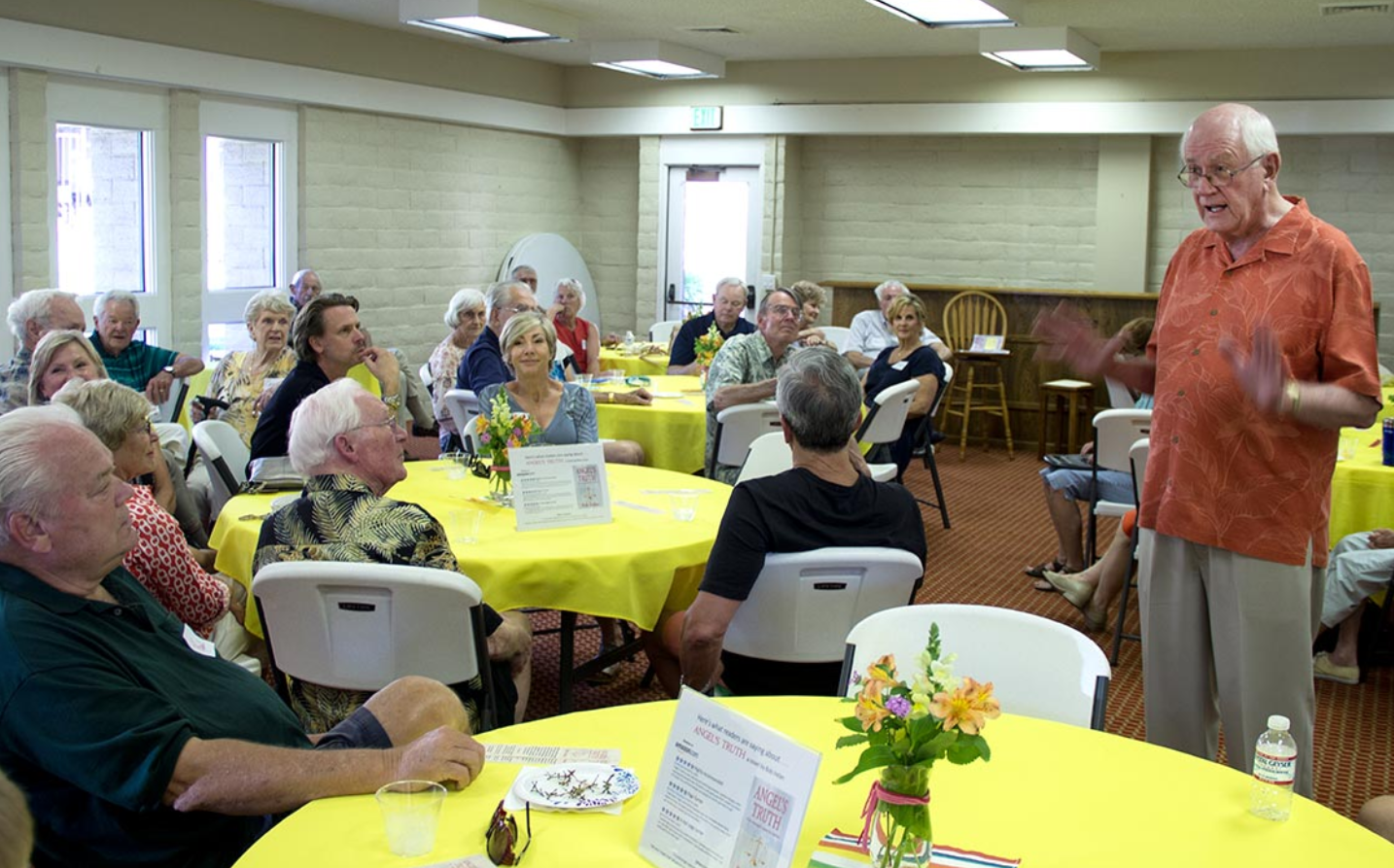
Top of the page photo courtesy of Rancho Murieta Community Website
Book signings are an effective marketing and communications tool, not only for established authors but most certainly for first-time novelists.
For me, a recent local launching/signing event for my first published novel, “Angel’s Truth,” proved to be a learning experience.
I learned that the audience is genuinely interested in what you have to say. And I was pleased by the number and quality of the questions.”Where did you come up with the plot? How did you choose the characters? How did you come up with their names? Is any of this based on fact? How do you go about organizing the narrative? Do you outline? Do you know the beginning, middle and end before you write? How do you go about getting published?”
That’s only a sampling of the questions I got, so be prepared.
The setting I used was a wine and cheese social, very informal, 4 to 5:30 p.m. It worked well. We had a framed table card of favorable Amazon reviews (“Here’s what readers are saying about “Angel’s Truth”) on each table and each person received a custom designed “Angel’s Truth” bookmark that quoted briefly from the book and gave information on where it could be bought. Good friends provided these and they were well received. Whether or not you bought the book, you got a bookmark as a gift and reminder.
I also told them the messages concerning discrimination, mindsets, injustices were ones I had long cared about. Also my belief that the truth often is not obvious — that it takes digging, commitment, persistence, plain old hard work to achieve it.
After being introduced, I spent a few minutes describing what motivated me to write the book. The motivations included my desire to try writing fiction after a long career that mandated all my writing be factual. I also told them the messages concerning discrimination, mindsets, injustices were ones I had long cared about. Also my belief that the truth often is not obvious — that it takes digging, commitment, persistence, plain old hard work to achieve it. And, while the plot is shaped around two vicious murders, I wanted to deliver a satisfying, surprise ending.
I read several passages from the book, starting with the first couple of pages. Because “Angel’s Truth” is a mystery, I selected other sections deeper into the book which pulled them into the plot. I didn’t tell too much, just enough to entice them to read the book and try to figure out who did what and where it was headed. That amount of time for reading passages seemed about right.
 Then came the questions – the absolute best part of the afternoon. My advice: Don’t cut these off; make sure you allow enough time to answer any and all questions. And, if/when you know the questioner, personalize your response.
Then came the questions – the absolute best part of the afternoon. My advice: Don’t cut these off; make sure you allow enough time to answer any and all questions. And, if/when you know the questioner, personalize your response.
I closed with this final thought.
“Everybody has a story to tell. It may be biographical and of interest to future generations of your family. It may be a detailed narrative or a collection of anecdotes. Or, it may be fiction. Whatever the choice, I challenged them to commit their ideas to paper.”
That resonated because several folks thanked me afterwards for the prompting.
We ended with signing and selling the book. Logistically, I found it worked well to have someone serve as cashier. That allowed me time to personalize each signing.
And, as my mother would say, “Remember the basic of thanking everyone at the beginning and end.”
Bottom line, this initial event for this first-time writer of fiction, was a very satisfying and educational experience. I hope some of the above details will be helpful to you.
Learn more about Bob Irelan in his interview and why he believes truth is so important or follow him on Facebook.